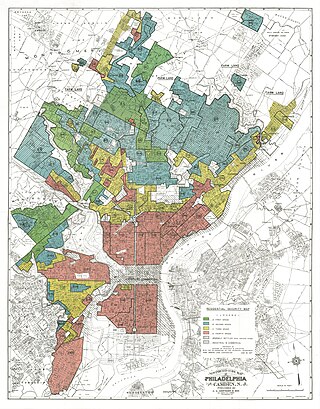Learning in a digital age/LiDA102/Societal issues/Digital redlining
From WikiEducator
Redlining is an American concept, which refers to the discriminatory practice of denying services, either directly, or through selectively raising prices to residents of certain areas based on racial or ethnic composition of those areas. In other words, making it extremely difficult for residents of poor neighbourhoods to borrow money or gain access to other financial services.
Historically, examples include refusing or limiting loans, mortgages and insurances within specified geographical areas, or in the case of retail, locating supermarkets impractically far from residents of the redlined area. Redlining comes from the red lines that were drawn on physical maps to designate targeted areas.
References
- ↑ Gilliard, C. (2016). Digital redlining and privacy with Chris Gilliard, Teaching in HigherEd Podcast


